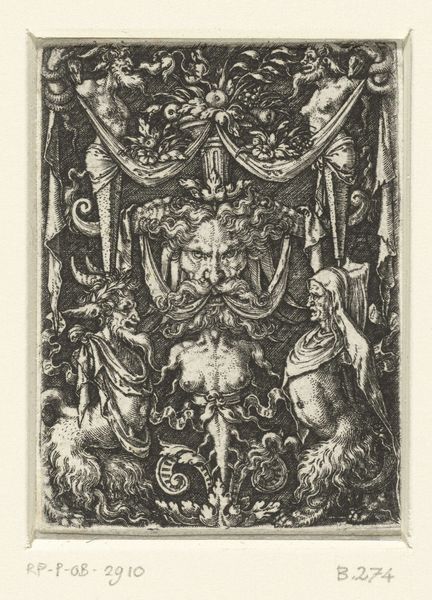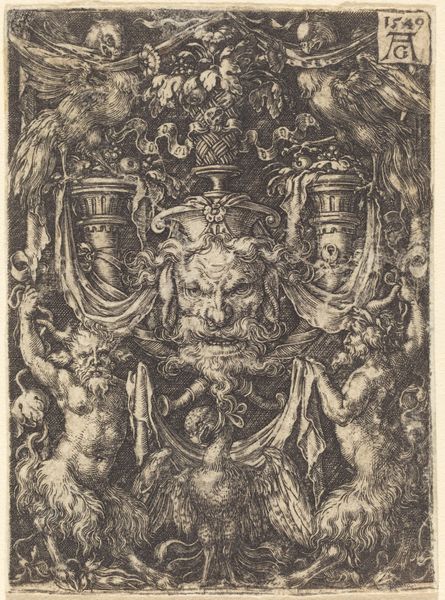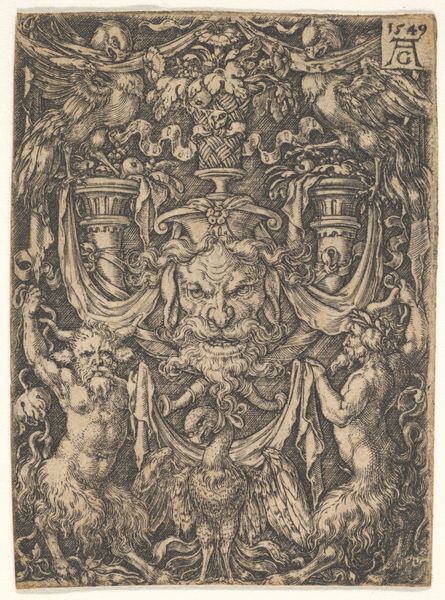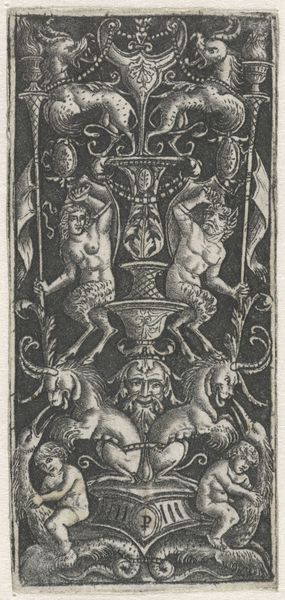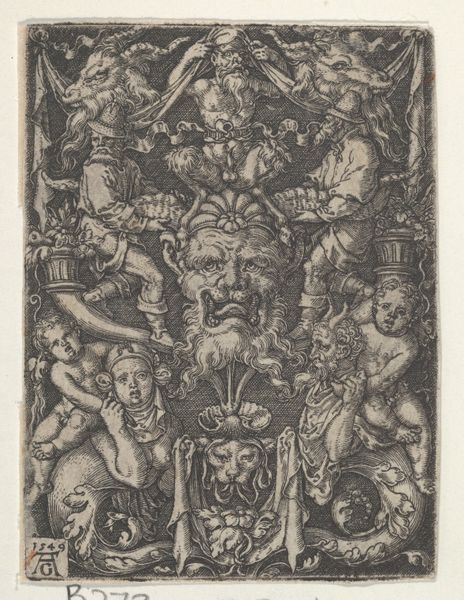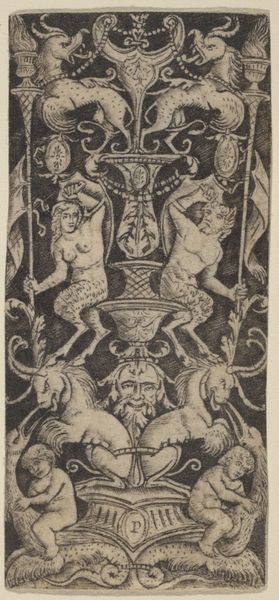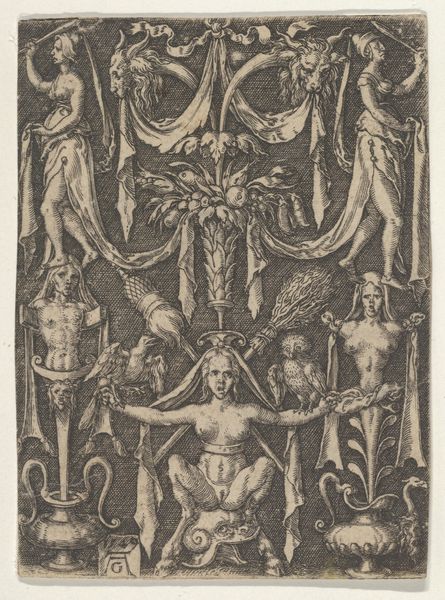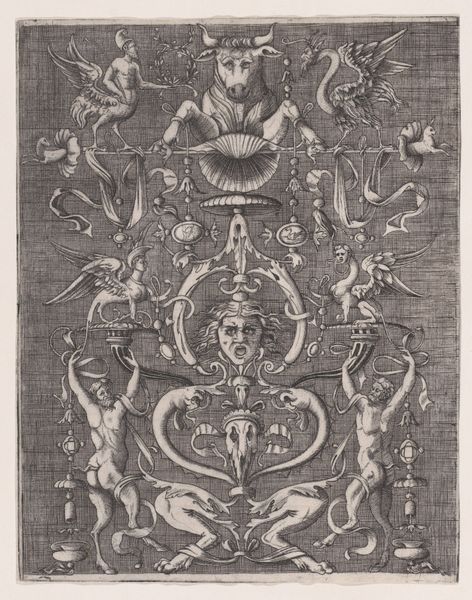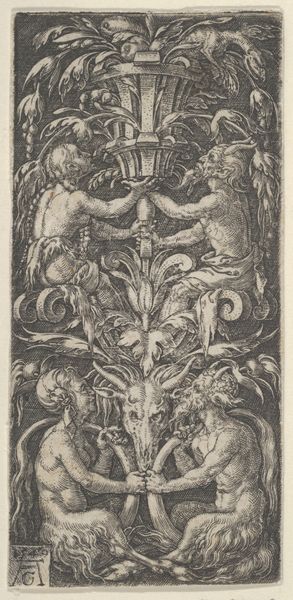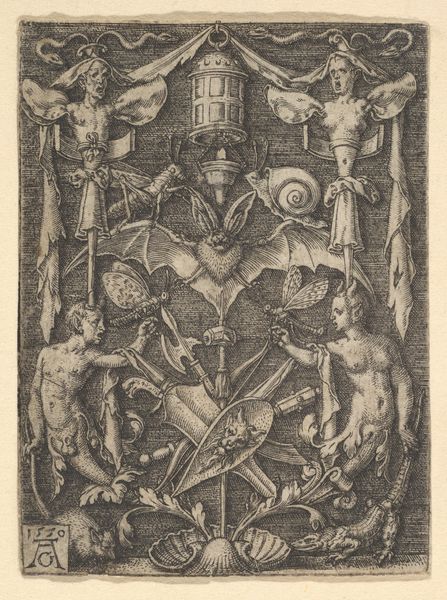
Panel with Grotesque Candelabrum Containing Satyrs, Children and a Trophy 1550
0:00
0:00
drawing, ornament, print, engraving
#
drawing
#
ornament
# print
#
figuration
#
form
#
11_renaissance
#
child
#
men
#
line
#
genre-painting
#
musical-instrument
#
northern-renaissance
#
engraving
Dimensions: Sheet: 2 11/16 × 1 15/16 in. (6.9 × 5 cm)
Copyright: Public Domain
Heinrich Aldegrever etched this panel with a grotesque candelabrum in the 16th century. Observe the satyrs and children, symbols of unchecked desire, and the trophy of arms, a stark claim to power through conquest. Note how the grotesque face, a theatrical mask, grins down at us from above, reminiscent of the Green Man, a figure of nature’s wild abundance. These symbols are not unique to Aldegrever, they echo across time. Consider the satyr, whose roots sink deep into the Dionysian revels of antiquity, or the trophy, resurrected in Roman triumphal arches. The grotesque itself has origins in ancient Roman art, then found new life in the Renaissance. Now, contemplate how the grotesque, born of antiquity and reborn in the Renaissance, invites us to confront the repressed urges lurking within our own collective psyche. The image touches something primal in our depths, and the symbols are in constant flux, shaped by history, culture, and our own subconscious desires.
Comments
No comments
Be the first to comment and join the conversation on the ultimate creative platform.
